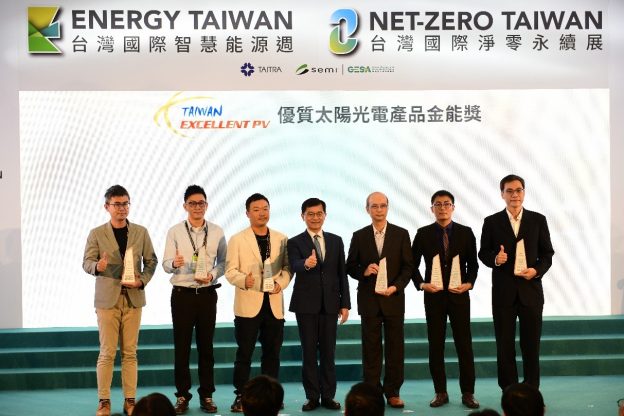Polysilicon:
Polysilicon prices have maintained stable throughout the week. The mainstream concluded price for mono recharge polysilicon is RMB 60/KG, while mono dense polysilicon is priced at RMB 58/KG and N-type polysilicon is currently priced at RMB 71/KG.
Analyzing trading patterns, we observe a rising trend in the number of polysilicon manufacturers engaging in order transactions. However, there are notable disparities in the pricing and volume across various types of polysilicon.
Concerning N-type polysilicon, downstream customers remain cautious, leading to a subdued level of transactions. Conversely, P-type prices quoted by leading manufacturers are holding steady, although other producers frequently adjust prices to facilitate larger shipments.
Turning to the supply side, March is anticipated to witness polysilicon production ranging from 180,000 to 190,000 tons, with the notable increase attributed to P-type polysilicon production. In contrast, the supply of N-type polysilicon remains unchanged.
On the demand front, the inventory of N-type wafers is substantial, and crystal pulling manufacturers are gradually depleting their polysilicon inventory accumulated before the Spring Festival holiday. Consequently, the demand from leading manufacturers for N-type polysilicon is lackluster. Additionally, wafer manufacturers are seeking to cut costs in crystal pulling production by procuring more popcorn polysilicon, thereby supporting the demand for P-type polysilicon.
In summary, robust utilization rates among crystal pulling manufacturers can bolster polysilicon prices. However, the challenges posed by high wafer inventory and polysilicon oversupply may exert downward pressure on prices. Consequently, we anticipate varying fluctuations in polysilicon prices in late March.
Wafer:
The prices of wafer have diverged throughout the week. The mainstream concluded price for M10 P-type wafer is RMB 2.05/Pc, while G12 P-type wafer is priced at RMB 2.80/Pc. The mainstream concluded price for M10 N-type wafer is RMB 1.95/Pc and G12 N-type is priced at RMB 3.00/Pc.
On the supply front, crystal pulling manufacturers are maintaining high utilization rates throughout March, and the wafer inventory is projected to surpass the 3 billion-piece threshold. Additionally, the production schedule for wafers is anticipated to fall within the range of 66-68 GW. Assessing the supply-demand gap, the wafer inventory is forecasted to climb, potentially exceeding the established bottom line by the end of March. Analyzing wafer sizes, the 18Xmm N-type wafer faces the most pronounced oversupply, and its price this week reflects the market's imbalance between supply and demand.
Turning to demand, downstream cell manufacturers have smoothly resumed operations, indicating a clear demand for wafers. However, the disparity between the demand from cell manufacturers and the available wafer supply remains substantial, ranging between 12-14 GW. Consequently, the supply-demand imbalance for wafers is expected to persist in the short term. Presently, inventory levels emerge as a pivotal factor influencing wafer prices, with the expectation that wafer inventory will continue to rise in March, exerting additional pressure on prices.
Cell:
Cell prices have been stable this week. The mainstream concluded price for M10 cell is RMB 0.390/W, while G12 cell is priced at RMB 0.380/W. The price of M10 mono TOPCon cell is RMB 0.46/W, while that of G12 mono TOPCon cell is RMB 0.49/W.
Regarding the supply side, the projected production schedule for cells is set to hover around 55-57 GW. Notably, N-type cell production dominates a significant proportion, with leading manufacturers spearheading the production of high-efficiency cells. Recent observations indicate that some newcomers are contemplating delaying or scrapping their plans for TOPCon cell production. These decisions stem from their ongoing efforts to secure funding, coupled with the current low profitability landscape. Consequently, the actual production capacity for TOPCon cells, as these new entrants come online, deviates significantly from the initially planned capacity, and surplus production remains elusive.
On the demand front, downstream module manufacturers are swiftly ramping up their production schedules, resulting in an increased demand for cells, particularly for high-efficiency N-type cells. Furthermore, overseas projects are fueling demand for P-type cells. With cell inventory dwindling and maintaining a low level, profits in the industry chain are anticipated to surge first. This week, there's a slight uptick in demand for M10 P-type cells, and manufacturers of high-efficiency N-type cells express a strong inclination to raise cell prices. However, the final price negotiation remains uncertain at this juncture.
Module:
Module prices have remained stable throughout the week. The mainstream concluded price for 182mm facial mono PERC module is RMB 0.93/W, 210mm facial mono PERC module is priced at RMB 0.95/W, 182mm bifacial glass PERC module at RMB 0.94/W, and 210mm bifacial glass PERC module at RMB 0.97/W.
On the supply side, module production scheduling is staging a recovery, marking the first upturn after contracting for two consecutive quarters, with expectations set between 48-50 GW. Notably, the surge in module production is chiefly attributed to leading manufacturers. The remaining uptick results from project deliveries in both domestic and overseas markets, but orders from tier-2 and tier-3 manufacturers remain unclear. Furthermore, these manufacturers continue to grapple with previous losses, reflecting in their low operational rates. The favorable pricing of auxiliary materials is contributing to cost benefits for module manufacturers, fostering a greater willingness to consider price increases.
As for demand, the installation of distributed solar PV systems in Q1 and Q2 is notably robust. Simultaneously, clear and ample overseas market orders are anticipated to drive up bidding project prices, leading to a rebound in customer demand. Currently, module prices remain steady, and some leading manufacturers have successfully sold modules at reasonable prices. Looking ahead, as demand experiences a significant rebound, module prices are expected to see a modest increase in the future.







